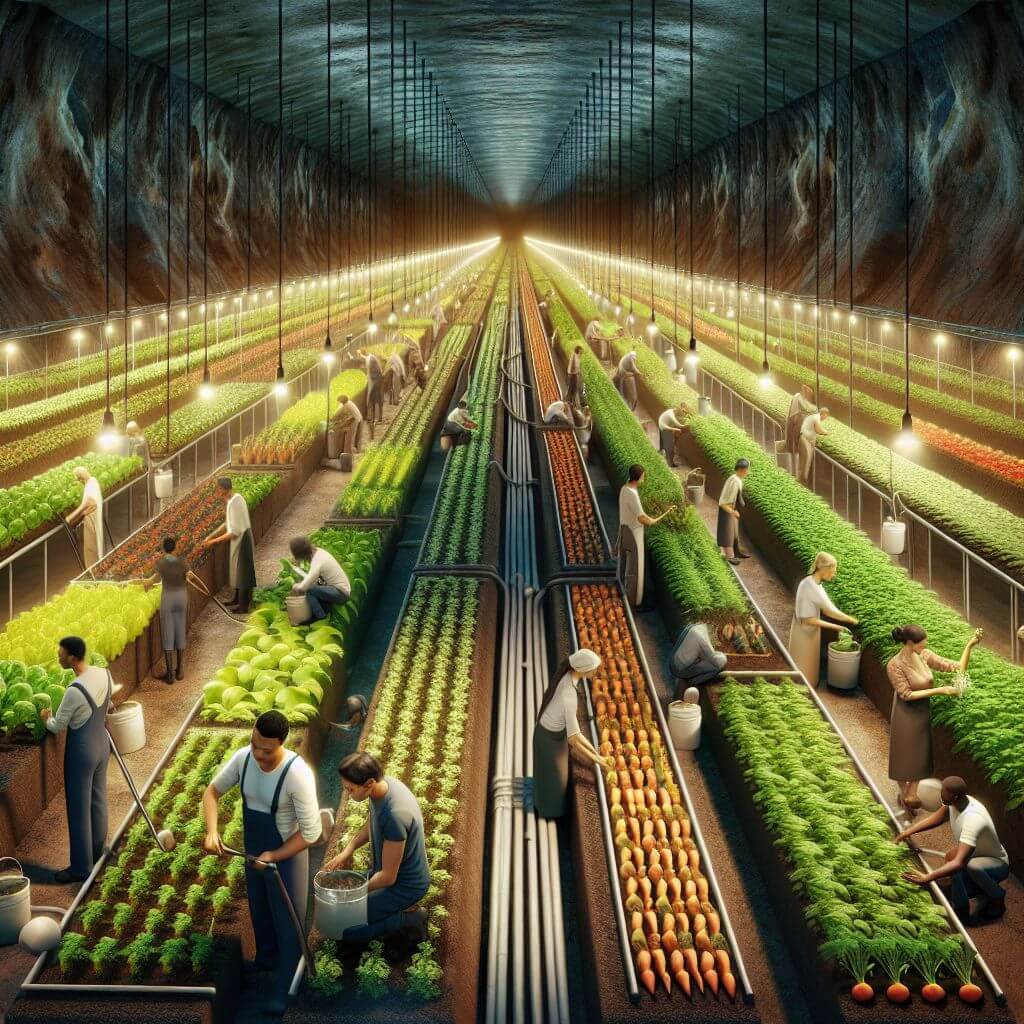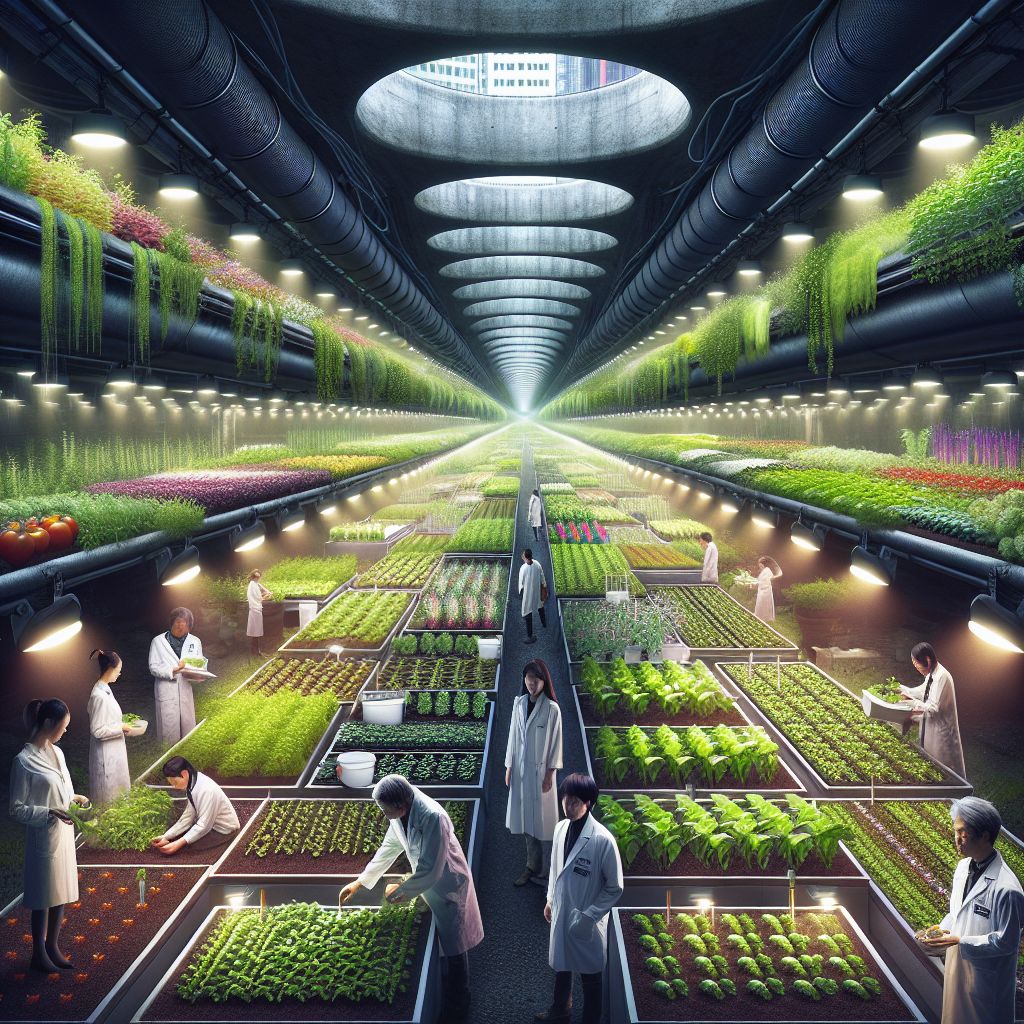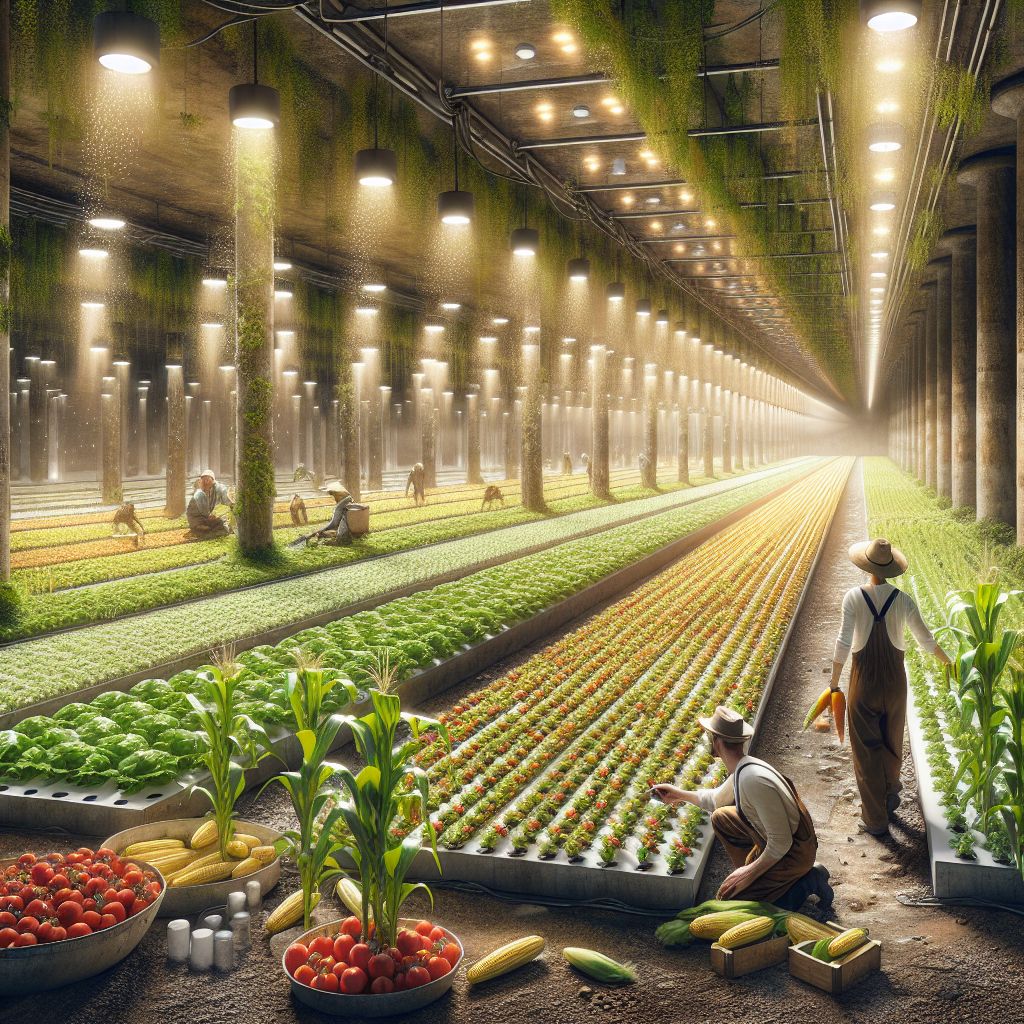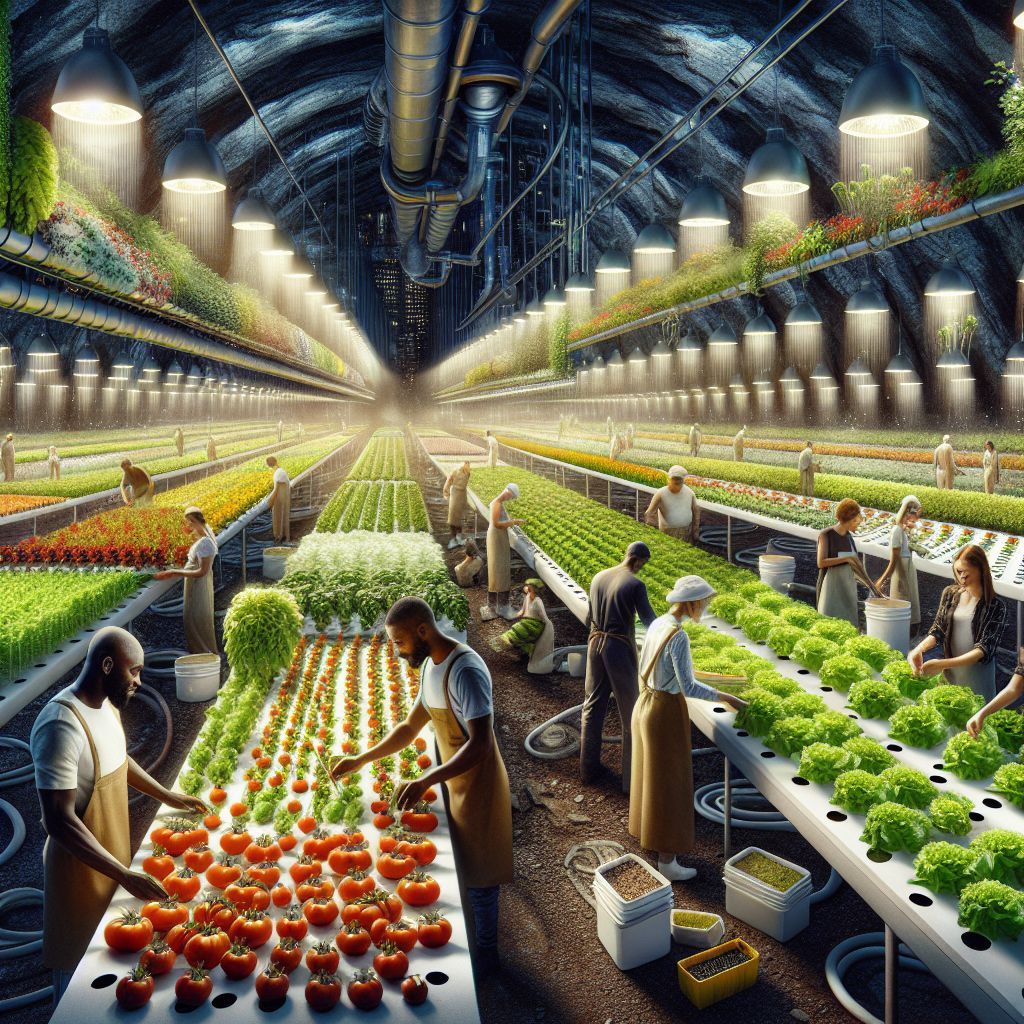
Key Takeaways
- Subterranean gardens provide stable temperatures and protection from the elements, making them ideal for urban survival gardening.
- Choosing the right location and preparing your space properly are crucial first steps in creating an underground garden.
- Some vegetables and herbs thrive in low-light environments, perfect for underground conditions.
- Artificial lighting, temperature, and humidity control are essential for a successful subterranean garden.
- Hydroponics can be a soil-free solution for growing plants underground, saving water and space.
Why Subterranean Gardens are Perfect for Urban Survival
Imagine a garden where the sun never scorches, frost never bites, and pests are just a distant memory. This is the reality of an underground garden, a concept that’s gaining traction in urban areas where space is limited, and resilience is key. These gardens are not just a novelty; they are a testament to the ingenuity of city dwellers who make the most out of every square inch of space.
Most importantly, these subterranean havens offer a year-round growing season. Because they are insulated by the earth, they maintain a consistent temperature, often requiring less heating in winter and cooling in summer. This means you can have fresh veggies on your table no matter the weather outside.
The Rise of Subterranean Gardening in Urban Landscapes
In the concrete jungle, green spaces are precious. Rooftops and balconies have long been commandeered by gardeners, but now, the underground is the new frontier. From converted bunkers to basement greenhouses, urban gardeners are digging deep to find new growing grounds.
Why underground, you ask? The answer is resilience. In an era where climate change is making weather patterns unpredictable, an underground garden’s controlled environment offers a buffer against the extremes. It’s also a way to ensure food security in the face of potential disruptions to supply chains.
Maximizing Space and Resources: Why Go Underground?
Space is at a premium in the city. Going underground utilizes areas that might otherwise be wasted. Besides that, an underground garden can tap into geothermal heat, reducing reliance on external energy sources.
But it’s not just about space-saving. Underground gardens use water more efficiently, too. In these controlled environments, you can recirculate water, minimizing waste. Plus, being underground naturally protects plants from pests and diseases, reducing the need for chemical interventions.
Starting Your Underground Garden: First Steps
Ready to start your own subterranean farm? The first step is to find the right spot. Look for a space that’s dry and accessible. Basements, cellars, or even a dugout in your backyard could work. You want somewhere that’s structurally sound, with good drainage to prevent water from pooling and damaging your plants.
Once you’ve found the perfect location, it’s time to prepare. Seal any cracks to keep out moisture and pests, and insulate your space to maintain a stable temperature. If you’re digging a new space, consult with a professional to ensure it’s done safely and in compliance with local building codes.
Scouting Locations: What to Look for in a Subterranean Space
When scouting for the ideal underground gardening spot, consider:
- Accessibility: Can you easily get to your garden to tend to it?
- Structural Integrity: Is the space safe and secure?
- Moisture Levels: Is it dry enough to prevent rot and mildew?
- Climate Control: Can you manage the temperature and humidity levels?
Sealing and Safekeeping: Preparing Your Underground Garden
Before planting, make sure your garden is a fortress against the elements:
- Waterproof the walls and floor to prevent leaks.
- Insulate pipes to avoid freezing in colder months.
- Install a ventilation system to manage humidity and provide fresh air for your plants.
With these steps, you’re laying the groundwork for a thriving underground garden that will serve you well for years to come.
Creating the Ideal Growing Environment

Once the location is prepped, it’s time to create the ideal conditions for your plants to flourish. Underground gardens are unique in that they’re removed from natural weather patterns. This means you’ll need to replicate the best parts of the great outdoors – like light, temperature, and humidity – to encourage healthy plant growth.
Artificial Lighting: What Works Best Underground
Without sunlight, your underground garden will rely on artificial lighting. LED grow lights are a popular choice because they’re energy-efficient and emit light that plants love. Look for full-spectrum LEDs that mimic natural sunlight, helping plants to photosynthesize effectively. You’ll want to position your lights strategically to ensure even coverage and adjust the intensity based on the needs of your plants.
Remember, the goal is to replicate the natural light cycle. Most plants thrive on 12 to 16 hours of light per day. Use a timer to regulate light exposure, ensuring your plants get the rest they need at night.
Temperature and Humidity Control in Your Garden
Maintaining the right temperature and humidity is crucial. Most plants prefer temperatures between 65°F and 75°F. Luckily, being underground provides natural insulation, which can help stabilize temperatures. However, you may still need a small heater for the colder months or a fan for the warmer ones.
Humidity is another factor. Plants need a certain level of moisture in the air to thrive, usually between 40% and 60%. A hygrometer can help you monitor humidity levels. If the air is too dry, consider using a humidifier. If it’s too moist, a dehumidifier or proper ventilation can help balance it out.
Managing these elements ensures your underground garden is a welcoming place for plants to grow. It’s all about creating a stable, controlled environment that mimics the natural conditions plants would experience above ground.
- Use full-spectrum LED lights to provide a balanced light source.
- Implement a timer to simulate natural day and night cycles.
- Monitor and adjust temperature and humidity levels to create the ideal growing conditions.
Hydroponic Systems: Soil-Free Gardening Below the Surface
Hydroponic systems are a perfect match for underground gardens. They allow you to grow plants without soil, using a nutrient-rich water solution instead. This method is not only space-efficient but also conserves water and reduces the risk of soil-borne diseases.
There are several types of hydroponic systems, but for beginners, a simple deep water culture or ebb and flow system might be the easiest to start with. These systems are relatively low-maintenance and can be quite productive. Plus, they’re fascinating to watch in action as your plants thrive in their nutrient-filled baths.
Continuous Care and Maintenance

Caring for an underground garden is a daily adventure. You’re the sun, the rain, and the guardian against pests – all rolled into one. Regular check-ins on your plants will help you catch any issues early and keep everything running smoothly.
Watering Wisely: Tips for Subterranean Garden Hydration
Water is life, especially for your underground crops. If you’re using traditional soil methods, ensure your watering schedule meets the needs of your plants without overdoing it. Too much water can lead to root rot and other issues.
For hydroponic systems, it’s all about maintaining the nutrient solution. Regularly check the pH and nutrient levels to ensure your plants are getting what they need. And remember, the water in hydroponic systems should be changed every few weeks to prevent nutrient buildup and to keep your plants healthy.
- Establish a consistent watering schedule tailored to your plants’ needs.
- Monitor the pH and nutrient levels in hydroponic systems regularly.
- Change the water in hydroponic systems periodically to maintain plant health.
Pest Management in a Controlled Environment
One of the advantages of an underground garden is that it’s less prone to pests. However, it’s not immune. Vigilance is key. Keep an eye out for signs of pests, such as chewed leaves or sticky residues. Introduce beneficial insects, like ladybugs or predatory mites, to keep harmful pests at bay. And always opt for organic pest control methods to keep your underground ecosystem safe and healthy.
Harvesting and Utilizing Your Underground Bounty

After all your hard work, it’s time to enjoy the fruits – or vegetables – of your labor. Knowing when and how to harvest is crucial for getting the most out of your underground garden.
Knowing When and How to Harvest
Harvest time varies depending on what you’re growing. Leafy greens might be ready in just a few weeks, while root vegetables can take several months. The key is to watch and wait – harvest too early, and you might miss out on flavor and size. Too late, and your veggies might be tough or bitter.
When it’s time, use the right tools – sharp scissors for herbs, a knife for squash, and a gentle tug for ripe tomatoes. And remember, many plants will continue to produce if you harvest them correctly, giving you a continuous supply of fresh produce.
- Leafy greens are often ready to harvest within a few weeks of planting.
- Root vegetables, like carrots and potatoes, may take several months to mature.
- Use appropriate tools for harvesting to avoid damaging the plant or its produce.
Harvesting is not just about taking; it’s about understanding and respecting the life cycle of your plants. With the right approach, your underground garden can be a sustainable source of nourishment and joy.
From Garden to Table: Storing and Preparing Your Crops
Once you’ve harvested your vegetables, it’s time to store and prepare them. Most root vegetables can be kept in a cool, dark place for months. Leafy greens, on the other hand, should be eaten quickly for the best flavor and nutrition.
When it comes to preparing your bounty, the possibilities are endless. Fresh salads, hearty soups, or even pickled treats – your underground garden can inspire a range of delicious, healthy meals. Plus, you can take pride in knowing that every bite is something you’ve grown yourself, a true labor of love.
And there you have it – a guide to creating and nurturing your very own underground garden. With a bit of planning, effort, and care, you can turn any subterranean space into a lush, productive haven. It’s a rewarding way to enhance your urban survival skills, promote sustainability, and enjoy the simple pleasure of growing your own food.
Once you’ve harvested your underground garden’s bounty, it’s crucial to store and prepare your crops to maximize their freshness and flavor. Different vegetables require different storage methods:
- Root vegetables like carrots and potatoes can be stored in cool, dark places, even within the underground garden itself, to keep them fresh for months.
- Leafy greens should be consumed quickly after harvesting to ensure they retain their nutritional value and taste.
Preparing your harvest can be an exciting and creative endeavor. From fresh salads to warming stews, your homegrown produce can transform into nutritious and delightful meals. It’s a gratifying moment when you can serve dishes made with vegetables from your own underground garden – a true testament to your dedication and hard work.
Garden Expansion and Community Involvement
As your underground garden flourishes, you may find yourself with more produce than you can consume. This is a fantastic opportunity to scale up your efforts and even involve your community. Consider donating excess vegetables to local food banks or setting up a produce swap with neighbors.
Community involvement doesn’t end with sharing crops. It can also mean sharing knowledge. Hosting workshops or creating an online blog to share your underground gardening experiences can inspire others to start their own subterranean projects, spreading the resilience and self-sufficiency you’ve cultivated.
Scaling Up Your Garden: Adding New Crops and Technology
When you’re ready to take your underground garden to the next level, consider introducing new crops or advanced technologies like automated watering systems or advanced hydroponics. These additions can increase your garden’s yield and efficiency, providing more food for your table and community.
Engaging with Other Urban Gardeners
Joining local gardening groups or online forums can connect you with fellow urban gardeners. These communities are invaluable for exchanging tips, seeds, and support. Together, you can learn and grow, strengthening the urban gardening movement one plant at a time.
FAQs
How do I deal with limited space for an underground garden?
Maximizing your space with vertical gardening techniques, such as using shelves or trellises, can help you grow more in a confined area. Also, consider compact plant varieties specifically bred for small spaces.
What are some common challenges with subterranean gardening?
Common challenges include managing artificial lighting, ensuring proper ventilation, and controlling temperature and humidity. It’s crucial to monitor these environmental factors closely to maintain a healthy underground garden.
Can I grow fruits in my underground garden?
Yes, you can grow certain fruits underground, such as strawberries or dwarf varieties of fruit trees. However, they may require more light and care than vegetables and herbs.
What are the energy costs associated with underground gardens?
The energy costs can vary depending on the size of your garden and the technology you use. LED lights and energy-efficient systems can help minimize these costs, making your garden more sustainable.
How can I ensure adequate pollination in an underground garden?
For plants that require pollination, you can manually pollinate by using a small brush to transfer pollen from one flower to another. Alternatively, you can introduce pollinators like bees if your underground space allows.
In conclusion, underground survival gardening is a practical and fulfilling way to grow food in urban environments. By understanding the nuances of subterranean agriculture and applying these tips, you can cultivate a resilient garden that provides sustenance and security. Whether you’re a seasoned gardener or a beginner, the underground world offers a unique and rewarding canvas for your green thumb.






